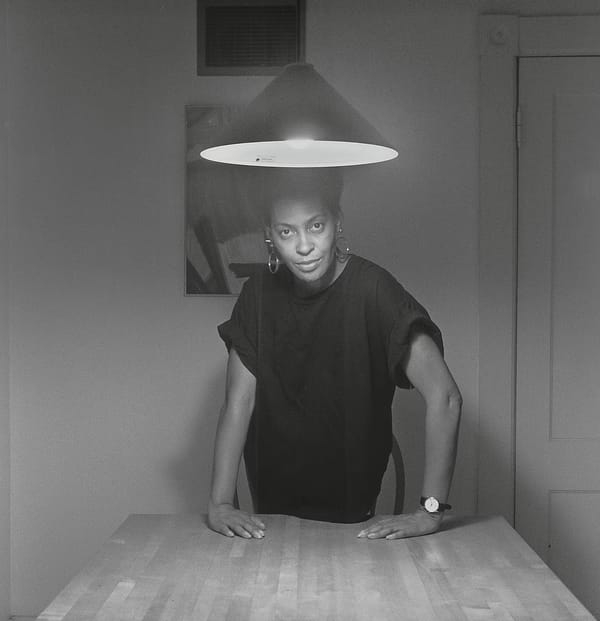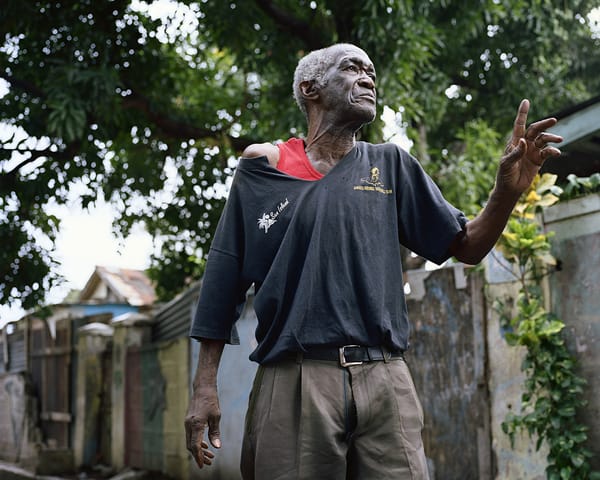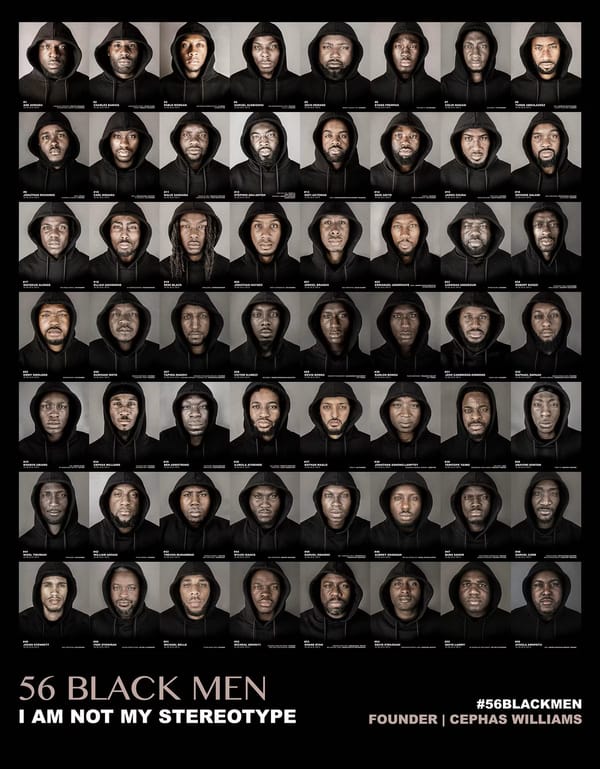10 Lessons Gordon Parks has taught me about photography

Introduction
Gordon Parks (1912 to 2006) remains one of the most influential American photographers of the twentieth century. His camera was both a mirror and a window, reflecting the harsh realities of the nation while offering a glimpse into lives too often overlooked. Born in Fort Scott, Kansas, Parks rose from humble beginnings to become the first Black staff photographer at Life magazine.
He was also a filmmaker, writer, and composer. His legacy is one of artistry fused with advocacy. As he once said, he used his camera as a weapon against injustice, creating images that continue to stir the conscience.
I still remember the first time I encountered Parks’s work. It was American Gothic, Washington, D.C. (1942), a portrait of Ella Watson, a Black woman standing solemnly with a mop and broom in front of the American flag. That single image captured the pain, pride, and complexity of America. Since then, I’ve immersed myself in his collections—Segregation Story, Harlem Gang Leader, and his powerful essays in Life. Each body of work reveals Parks’s rare ability to combine documentary grit with poetic composition.
In this post, I share ten lessons I’ve drawn from Gordon Parks. These lessons continue to guide my own photographic journey. Parks didn’t just document the world, he changed it. Whether you’re a visual storyteller or someone moved by powerful imagery, I hope these reflections offer inspiration and direction.
The Enduring Influence of Gordon Parks
Parks taught me early on that photography isn’t just about capturing moments. It’s about telling stories. His images carry narrative weight, emotional depth, and urgent commentary. As he famously put it, the camera was “my choice of weapons.” Through it, he challenged injustice, evoked empathy, and invited dialogue.
Reading his autobiography, A Choice of Weapons, deepened my belief in the transformative power of photography. Parks confronted racism and poverty with courage and clarity. Even in our digital age of instant sharing, I often think back to his integrity and intention. Every frame he created was crafted with care and carried a responsibility to represent the truth.
Who Was Gordon Parks?
Born in 1912 in segregated Kansas, Gordon Roger Alexander Buchanan Parks endured racism, violence, and homelessness by the age of fifteen. Despite the odds, he taught himself photography after buying a secondhand camera.
In 1941, he joined the Farm Security Administration (FSA), documenting poverty and inequality across America. He later worked with the Office of War Information and the Standard Oil Photography Project. His national breakthrough came in 1948 with Harlem Gang Leader, a Life magazine essay that led to a long tenure as a staff photographer.
Beyond photography, Parks was a novelist, poet, musician, and filmmaker. He directed The Learning Tree in 1969 and the iconic Shaft in 1971. But his most enduring contribution is his photography, which bears witness to injustice with profound humanity. He died in 2006, leaving behind a body of work that continues to resonate.
10 Lessons from Gordon Parks
1. Use the camera to drive change
“I picked up a camera because it was my choice of weapon against what I hated most about the universe: racism, intolerance, poverty.” — Gordon Parks
For Parks, the camera was never neutral. It was a tool of protest, wielded with intention to challenge injustice and reveal the structures many preferred to ignore. In essays like Harlem Gang Leader and Freedom’s Fearful Foe: Poverty, he didn’t just document suffering, he illuminated its causes and called for change. His photography proved that art could be a force for public awareness and social transformation.
2. Lead with empathy
Parks often said that his lived experience of racism shaped how he saw others. That empathy is visible in the quiet dignity of his portraits. His collaborators are never reduced to their pain. He approached people not as problems to solve, but as stories to understand. This respect made his work feel intimate, even when addressing difficult realities.
3. Don’t let circumstance define you
Parks grew up in poverty and faced racism at every stage of his life. But he refused to let those conditions define his future or limit his ambition. He taught himself photography with a secondhand camera and created a path where none had existed for Black artists in mainstream media. His life is a testament to persistence, creativity, and self-belief.
4. Combine truth with beauty
Rather than choosing between aesthetics and accuracy, Parks showed us that both could live in a single frame. His images confront injustice but are also composed with elegance and care. The beauty never softens the truth, it draws us in so we cannot look away. In doing so, he invited viewers to see beyond surface suffering and into the shared humanity beneath it.
5. Stay curious and multidisciplinary
Parks was never just one thing. He was a photographer, filmmaker, composer, poet, and novelist. He saw each medium as a new way to tell stories and reach different audiences. That curiosity expanded his voice and influence, allowing him to explore Black life from multiple angles. His example reminds us not to limit ourselves to one discipline or format.
6. Centre humanity
In series like Segregation Story and his interpretations of Invisible Man, Parks zeroed in on the emotional texture of people’s lives. He didn’t simply photograph events, he revealed what it felt like to live through them. His portraits honour the everyday, showing resilience, tenderness and complexity in moments others might have missed. Parks teaches us to seek the soul in our subjects.
7. Push beyond your comfort zone
Parks wasn’t afraid to shift gears or enter new creative worlds. From documentary photography to fashion shoots, celebrity portraits to film direction, he followed the story wherever it led. He believed that staying still was a greater risk than trying something new. His career encourages us to experiment boldly and trust that our voice can adapt.
8. Collaborate with communities
Parks didn’t just show up, shoot, and leave. He built relationships with his subjects, often spending weeks listening and observing before lifting his camera. His images reflect that trust, especially in stories like Harlem Gang Leader, where he portrayed Red Jackson not as a stereotype, but as a human being. When we collaborate with communities, our work gains honesty and meaning.
9. Lead with compassion
Whether photographing a child in Harlem or a grieving family in Alabama, Parks approached every subject with deep care. His compassion gave him courage, the courage to tell uncomfortable truths, to risk backlash, and to show emotion in his work. He knew that vulnerability was not a weakness but a pathway to connection. That spirit should guide every frame we make.
10. Tell the truth, not just a perfect story
Parks’s most powerful photographs aren’t always clean or polished. What gives them weight is their honesty. They reflect real lives, real mess, real moments. He wasn’t chasing technical perfection; he was after emotional truth. In a world obsessed with aesthetics, Parks reminds us that authenticity will always resonate more deeply than surface beauty.
Conclusion
Gordon Parks’s life is a lesson in how photography can be used to open hearts, challenge injustice, and inspire change. He overcame poverty, racism, and rejection to become a pioneer in American photography and film. His work urges us to create with purpose, care, and courage.
From him, we learn to use the camera with intention. We learn to combine beauty with truth, to lead with empathy, and to seek out authentic connection. We learn that storytelling matters more than perfection, and that passion must be grounded in compassion.
If you are moved by his work, I encourage you to visit the Gordon Parks Foundation to explore his photography and learn more about his legacy. By applying his principles to our own creative journeys, we ensure that the conversations he started continue today with clarity, integrity, and heart.
Share on social
If this sparked something in you, share it. Our voices are powerful, and when we lift each other up, we all see a little clearer.
Contribute
At theBLKGZE, we don’t just reflect the world, we reshape it. We’re building an archive that centres Black vision and truth. We reclaim the frame. We archive what’s been silenced. We honour the everyday and the extraordinary in Black life.
We’re calling on Black photographers to contribute. Add your voice to the archive. Let's reshape the narrative with a truer picture of who we are and who we’ve always been.





